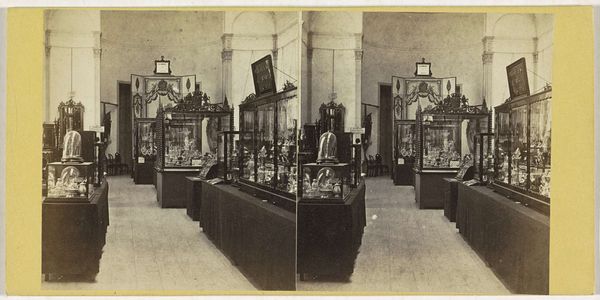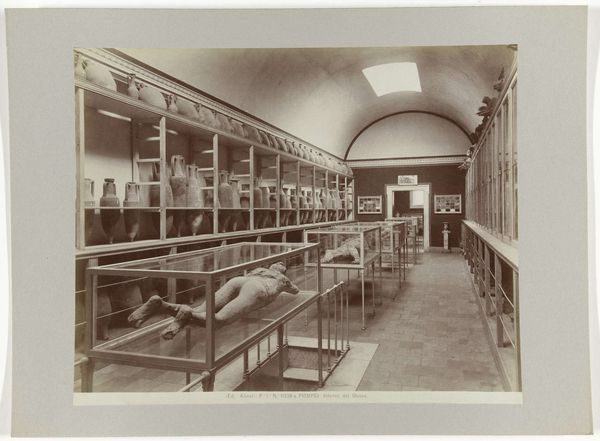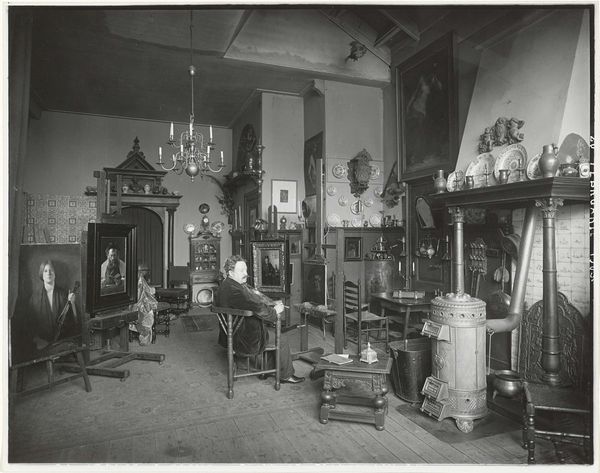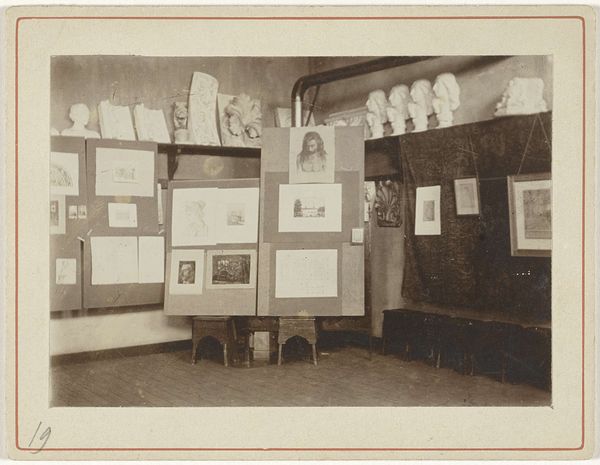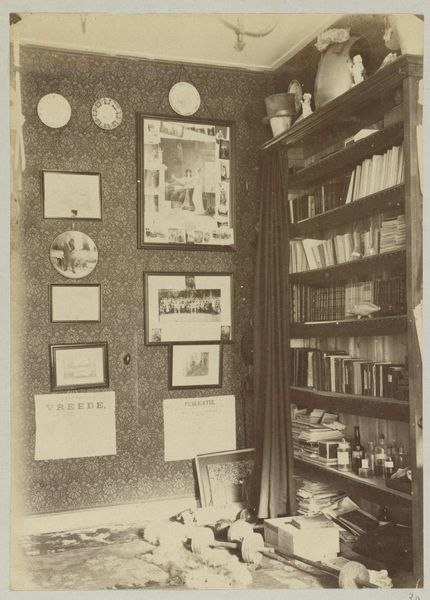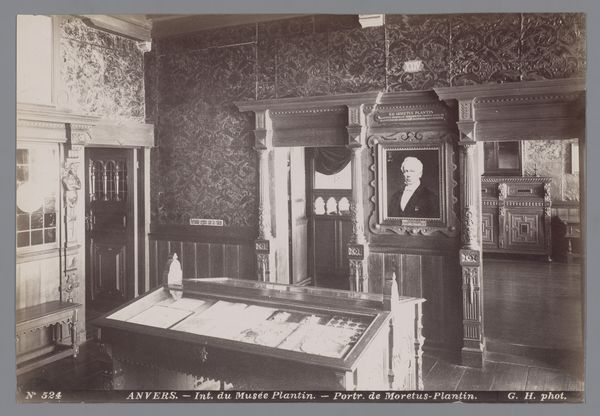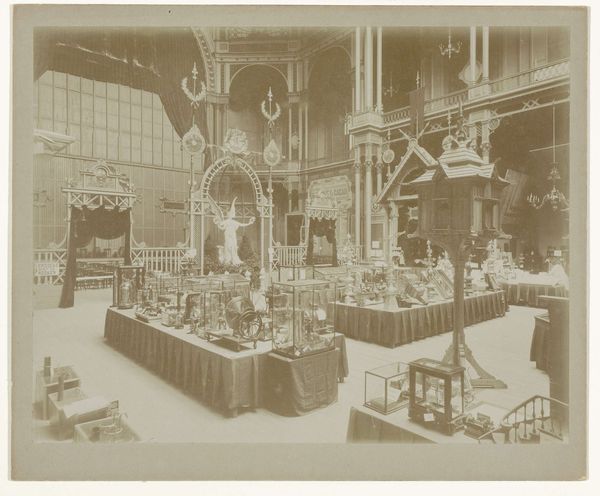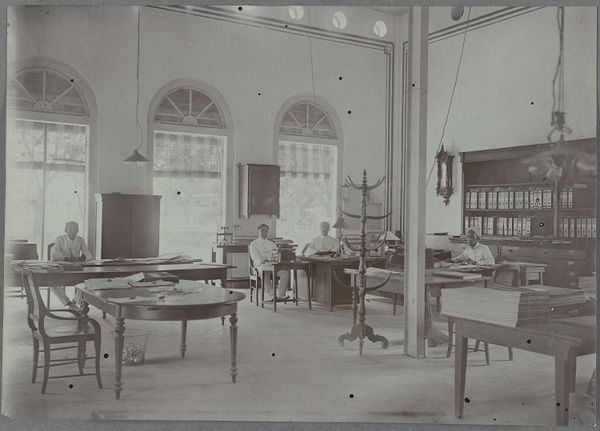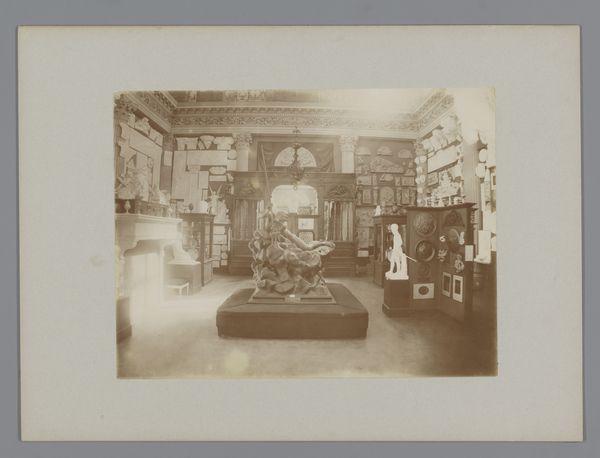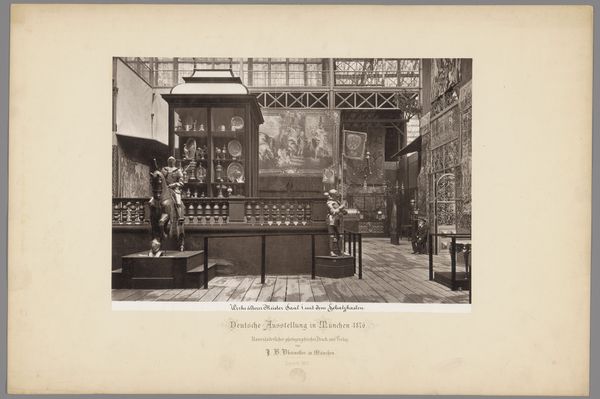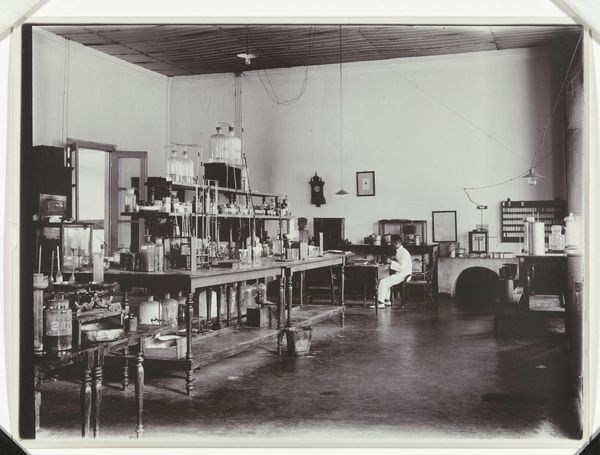
Objecten in vitrinekasten bij de tentoonstelling voor Nationale Nijverheid en Kunst in het Paleis voor Volksvlijt, Amsterdam 1866
0:00
0:00
print, photography, gelatin-silver-print
# print
#
photography
#
gelatin-silver-print
Dimensions: height 82 mm, width 77 mm, height 82 mm, width 77 mm, height 85 mm, width 178 mm
Copyright: Rijks Museum: Open Domain
Curator: This photograph, taken around 1866, documents the displays at the National Industry and Art exhibition in Amsterdam's Palace for National Industry. Editor: It's intriguing. There's a striking formality to the composition—a room punctuated by these dark, heavy vitrines filled with objects. You almost feel like an unseen observer in this hall. The light, coming in, looks harsh for a gelatin silver print. Curator: The very fact that it's captured in a gelatin-silver print speaks volumes. It documents a moment when industrial production was a source of national pride and on display. Consider the social and material labor invested to fill those cases, and how these goods impacted everyday lives. It showcases how manufactured items were gaining importance, becoming central to economy and trade. Editor: And of course, exhibitions like these served a crucial function, not just in terms of sales but in shaping cultural values. It was about defining what was "good" art and craft, setting trends. You can imagine the conversations sparked, the standards set. The fact this display was inside of the Palace for National Industry, tells me a lot about the sociopolitical forces. Curator: Absolutely. These objects would've been displayed strategically. Placed to communicate aspiration. How available were such consumer goods to the general public in the mid-19th century? Did mass consumption include all social classes, or was it an aspirational model that drove innovation and design? Editor: These kinds of public exhibitions, were significant in creating a collective national identity. A way of communicating that things like, industry, design and trade are worthwhile enterprises to take pride in. It's not merely about beautiful objects, but the politics of representation. Curator: Precisely, from the skilled labour needed to fashion them, to their place within society. This photograph becomes a testament to consumption as much as design. I am glad we looked closer at it. Editor: Agreed. Thinking about those unseen audiences and sociopolitical context gives the photograph additional layers of interpretation. Thank you!
Comments
No comments
Be the first to comment and join the conversation on the ultimate creative platform.
